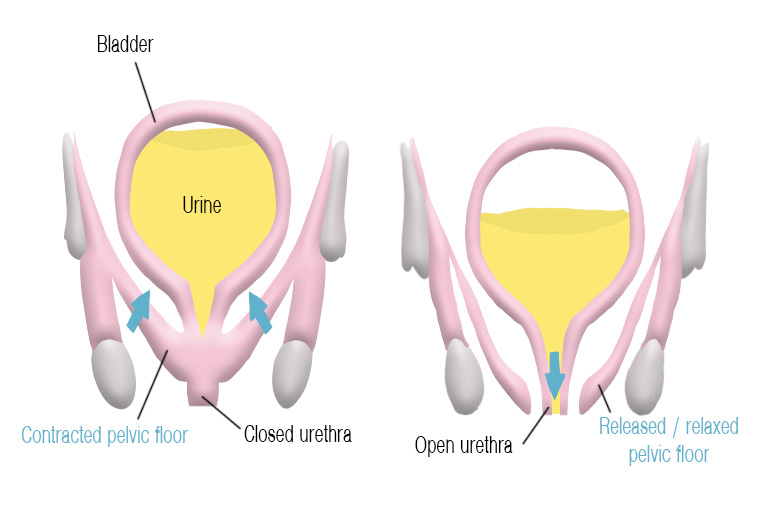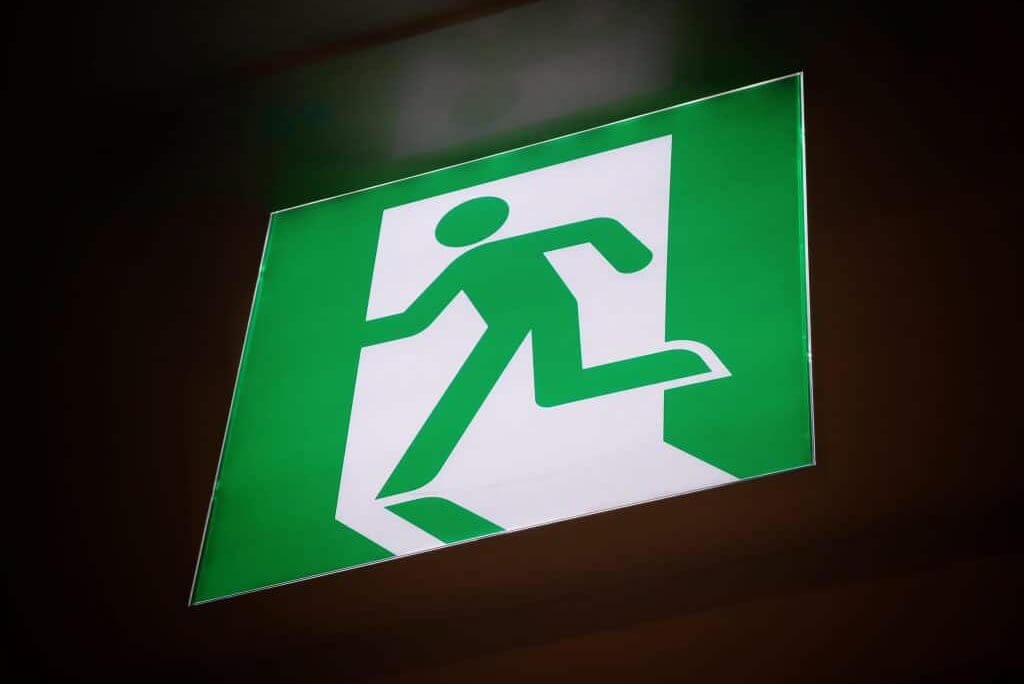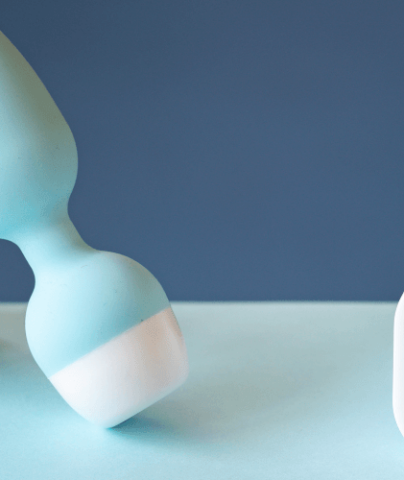
Urinary incontinence: What role does my pelvic floor play?
Regardless of our age and gender, we can suffer from urinary incontinence at a time in our life. Unfortunately, it is still a prejudice that this symptom only affects elderly people.

Why does urinary incontinence occur?
Various factors contribute to the occurrence of urinary incontinence
- Pregnancy: During pregnancy, some women already notice that they have urine leakage. The weight of the baby presses on the bladder and the pelvic floor. Also: Hormones that prepare ligaments and joints for delivery weaken the muscles that control urine flow.
- Delivery: The pelvic floor can be injured during birth.
- Menopause: A period during which it is important to take care of your pelvic floor. The pelvic floor should be taken care of from young age, so I would avoid to say this. Mamy women experience bladder weakness during menopause. There are signs that the hormonal changes – a reduced level of oestrogen in particular – affect the pelvic floor and urinary tract.
- Doing sport: Some sports favor the appearance of urinary leaks. Since they put extra pressure on the bladder and pelvic floor.
What is the connection between the pelvic floor and urinary incontinence?
Urinary incontinence is described as the existence of involuntary urine leaks from the urethra (the evacuating canal of the bladder).
Urinary incontinence can be due to many reasons:
- weak pelvic floor, the urethra can not keep close
- urgency from the bladder: the bladder contracts
- stress urinary incontinence
- urge urinary incontinence
- mixed urinary incontinence
- neurogenic bladder

Whether it is anal or urinary, incontinence is a very frequent pathology. It concerns more than 6 million people in France, mostly women.
Faecal incontinence is involuntary loss of liquid or solid stool that is a social or hygienic problem. Anal incontinence is involuntary loss of flatus, liquid or solid stool that is a social or hygienic problem.
The statistics of urinary incontinence in France
1 in 10 women suffer from urinary incontinence and have urine leaking problems.
2/3 of these women suffer silently without consulting a health professional.
2/3 of these women say that this influences their life quality: familywise, socially, sexually, and professionally.
We distinguish between two types of incontinence
Effort incontinence or stress incontinence
When the expression “wet myself laughing” becomes true, it is really not pleasant. Often, this is a sign of a weak pelvic floor. Other symptoms: a physical effort like carrying heavy weights, sneezing or simply coughing can lead to urinary leaks. If at the end of a sport session you smell an unusual smell and feel wet, it is time to do something!
Efforts lead to increased abdominal pressure on the bladder. When the pelvic floor is weakened, this pressure surpasses the intensity of the sphincter’s closure and leads to involuntary urine leaks.
This pelvic muscle failure is often the consequence of giving birth. However, it can be linked to overweight or hormonal deficiency during menopause. It is the most common type of incontinence for women (51,3%)

Urge incontinence
Urge incontinence is defined by an involuntary loss of urine preceded by an urgent and unmanageable need to urinate, without having the time to reach the toilet. It can be triggered by :
- cold
- contact or sound of water
- the way back home (key in lock syndrome)
- caffein, energy drinks, coffee or tea (irritates the inside of the bladder)
- drinking too much and even too little
16,8% of women suffering from incontinence have urge incontinence.

Mixed incontinence
There are also mixed forms of incontinence that associate stress and urge incontinence. A combination of both stress and urge urinary incontinence. About 1 incontinent woman out of 3 (31,9% of cases) has mixed incontinence.
To avoid incontinence problem, you can train your pelvic floor and do Kegels.




